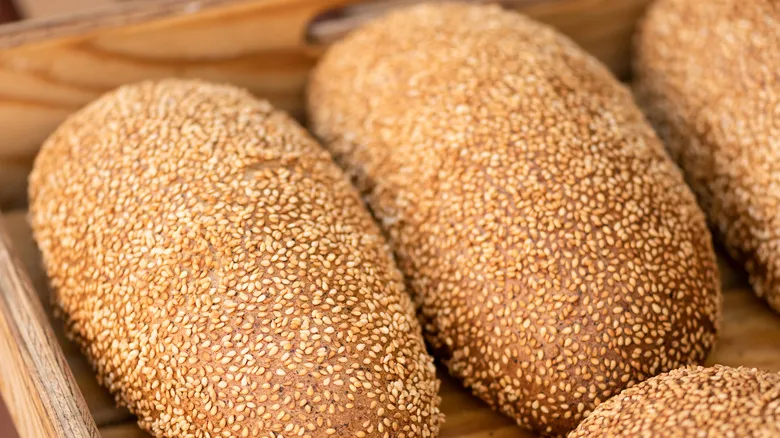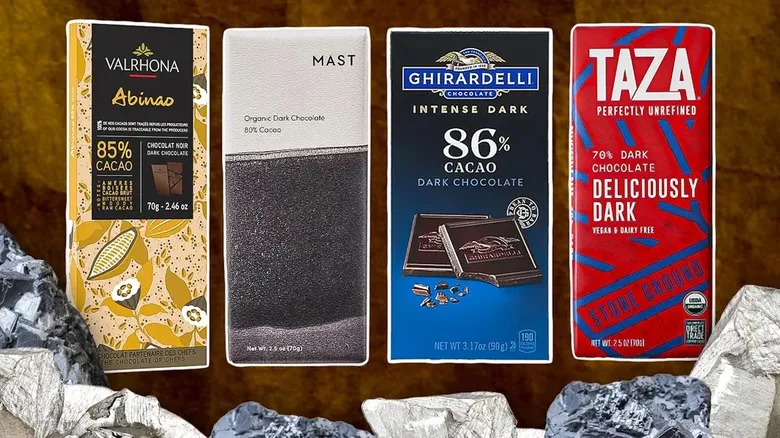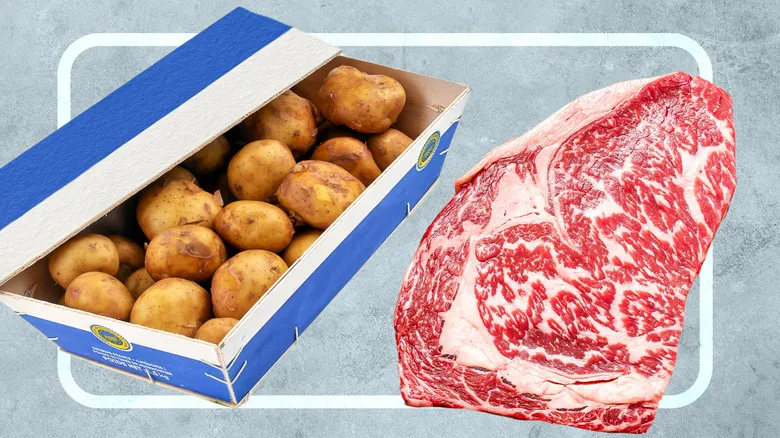Pay no mind to the grind

The cornerstone of any bread is flour — the finest bread is made from the highest quality flour. But how can you assess the flour quality of your favorite bread from the grocery store? Bread enthusiasts often point to the milling process that created the flour. While most commercial mills utilize steel rollers to grind wheat into flour, this method has faced criticism from advocates of stone-ground flour for its health benefits.
As a result, health-conscious shoppers frequently opt for bread that boasts "made with stone-ground flour" on its label. This suggests that the roller milling process diminishes the nutritional value of the wheat, but is that truly accurate? Myhrvold argues that this notion is somewhat misleading.
"In general, you can now obtain a superior quality of flour from steel milling," he explains. "In the past, steel-milled flours could inadvertently become overheated during the milling process, which would harm the starch and lead to breads that didn’t rise well. However, today, steel-milled flour is arguably of higher quality than stone-ground flour."
Of course, there are other distinctions between stone-milled and steel-milled flours. Some individuals appreciate the unique flavors that stone-ground flour adds to their bread, and certain recipes specifically call for it. But if your decision between the two hinges on nutritional content, feel free to relax and choose whichever option you prefer.
Organic is just a marketing buzzword

Similar to the trendy use of phrases like "stone-ground" and "artisan," the organic label has also come to suggest a superior level of health and nutrition. While there are numerous brands of organic bread available today, should they really be in your shopping cart? Myhrvold attributes this to savvy marketing strategies.
"Ultimately, labels and marketing terms don't hold much significance regarding the quality of the bread," he explains. "For instance, the organic label is regulated by the government, but it doesn't necessarily mean what you might assume it does."
In fact, one of the most significant influences on grocery store trends over the past few decades has been the U.S. National Organic Program (NOP). This initiative established a set of standards approved by the U.S. Department of Agriculture that certifies and promotes certain foods as organic. The primary implication of certified organic food is that it has been produced without synthetic materials, which is believed to offer additional health benefits to consumers. However, the NOP standards actually allow for a range of synthetic materials in the production and growth processes of organic food certification. This means that, in some cases, substances like hydrogen peroxide, plastic mulch, and soap-based insecticides are permitted. Given the current NOP standards, the organic label may not be the gold standard that many consumers assume it to be.
More grains do not equal more health benefits

Multigrain bread has gained popularity among health-conscious consumers, based on the belief that if one type of grain is beneficial, then a mix of grains must be even better. However, this notion is misleading. While incorporating various grains can enhance flavor and texture, Myhrvold argues that the term "multigrain" is often misunderstood.
"It's a misconception that more grains equate to better quality," he explains. "Having an 8-cylinder car may offer more power than a 4-cylinder, but that analogy doesn't apply to the number of grains in bread."
For those seeking a more nutritionally balanced choice, breads labeled "whole grain" or "whole wheat" are preferable, as they contain all parts of the wheat grain. The milling process divides the wheat into three components: bran, germ, and endosperm. Refined flour discards the nutrient-rich bran and germ, relying solely on the less nutritious endosperm. In contrast, whole grain flour retains both the bran and germ, resulting in a more nutritious bread.
Today's shoppers face a myriad of misleading options, which is why Myhrvold recommends purchasing bread from a local baker whenever possible. When that isn't feasible, it's beneficial to focus less on the grain count and more on personal taste. Ultimately, the best way to evaluate your bread is by how well it pairs with your favorite egg salad recipe, rather than the specifics of its milling process.
Recommended

Here's How Long Ground Beef Is Safe In Your Fridge, Raw Or Cooked

The Dark Chocolate Brands With The Lowest Lead And Cadmium Levels

Make Homemade Ice Cream In A Bag The Better Way With This Special Salt

This Rare Potato Variety Is More Expensive Than Wagyu Beef
Next up

